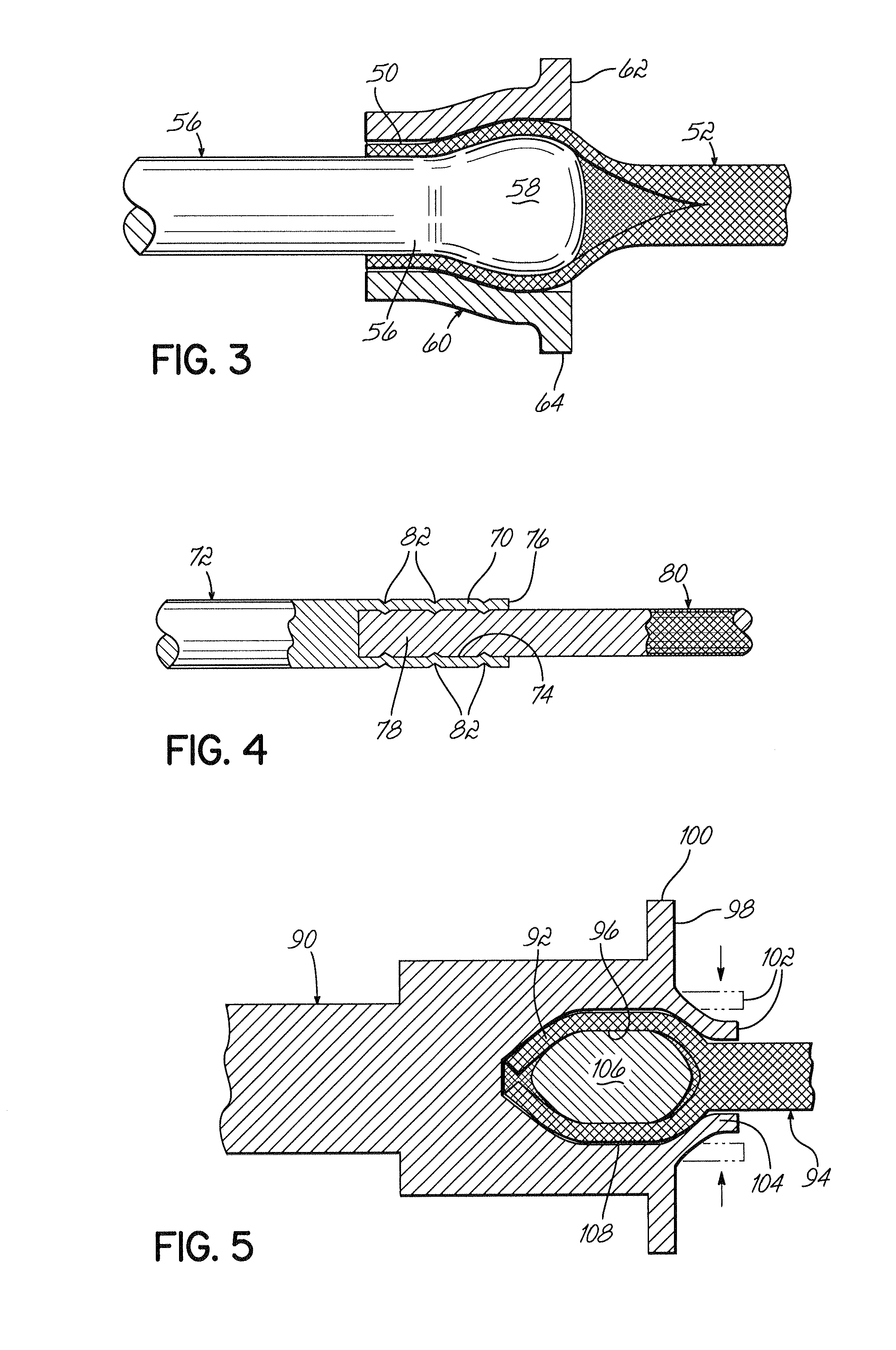Spinal stabilization system with rigid and flexible elements
a technology of rigid and flexible elements and stabilization systems, applied in the field of spinal stabilization systems, can solve the problems difficult to pull the cord off the rigid element, and achieve the effect of increasing the surface area in contact and facilitating the retaining of the cord
- Summary
- Abstract
- Description
- Claims
- Application Information
AI Technical Summary
Benefits of technology
Problems solved by technology
Method used
Image
Examples
Embodiment Construction
[0025]FIG. 1 shows one embodiment of a spinal stabilization system or construct 10 according the invention within a patient's body. The stabilization system 10 includes first, second, and third anchor members 12, 14, 16 secured to respective first, second, and third vertebrae 18, 20, 22 within the patient's body. The anchor members 12, 14, 16 may be any type of anchor such as a screw or hook designed to cooperate with a rigid element 24 or a flexible element 26 to stabilize a portion of the spine. For example, in the embodiment shown in FIG. 1, the anchor members 12, 14, 16 are pedicle screw assemblies each having a screw body 30, a housing or retainer 32 coupled to the screw body 30, and a set screw 34. Each housing 32 receives the rigid element 24 or the flexible element 26, which are secured to the associated housing 32 by one of the set screws 34. One example of this type of pedicle screw arrangement is the Optima® Spinal Stabilization System available from Zimmer, Inc. of Warsa...
PUM
 Login to View More
Login to View More Abstract
Description
Claims
Application Information
 Login to View More
Login to View More - R&D
- Intellectual Property
- Life Sciences
- Materials
- Tech Scout
- Unparalleled Data Quality
- Higher Quality Content
- 60% Fewer Hallucinations
Browse by: Latest US Patents, China's latest patents, Technical Efficacy Thesaurus, Application Domain, Technology Topic, Popular Technical Reports.
© 2025 PatSnap. All rights reserved.Legal|Privacy policy|Modern Slavery Act Transparency Statement|Sitemap|About US| Contact US: help@patsnap.com



